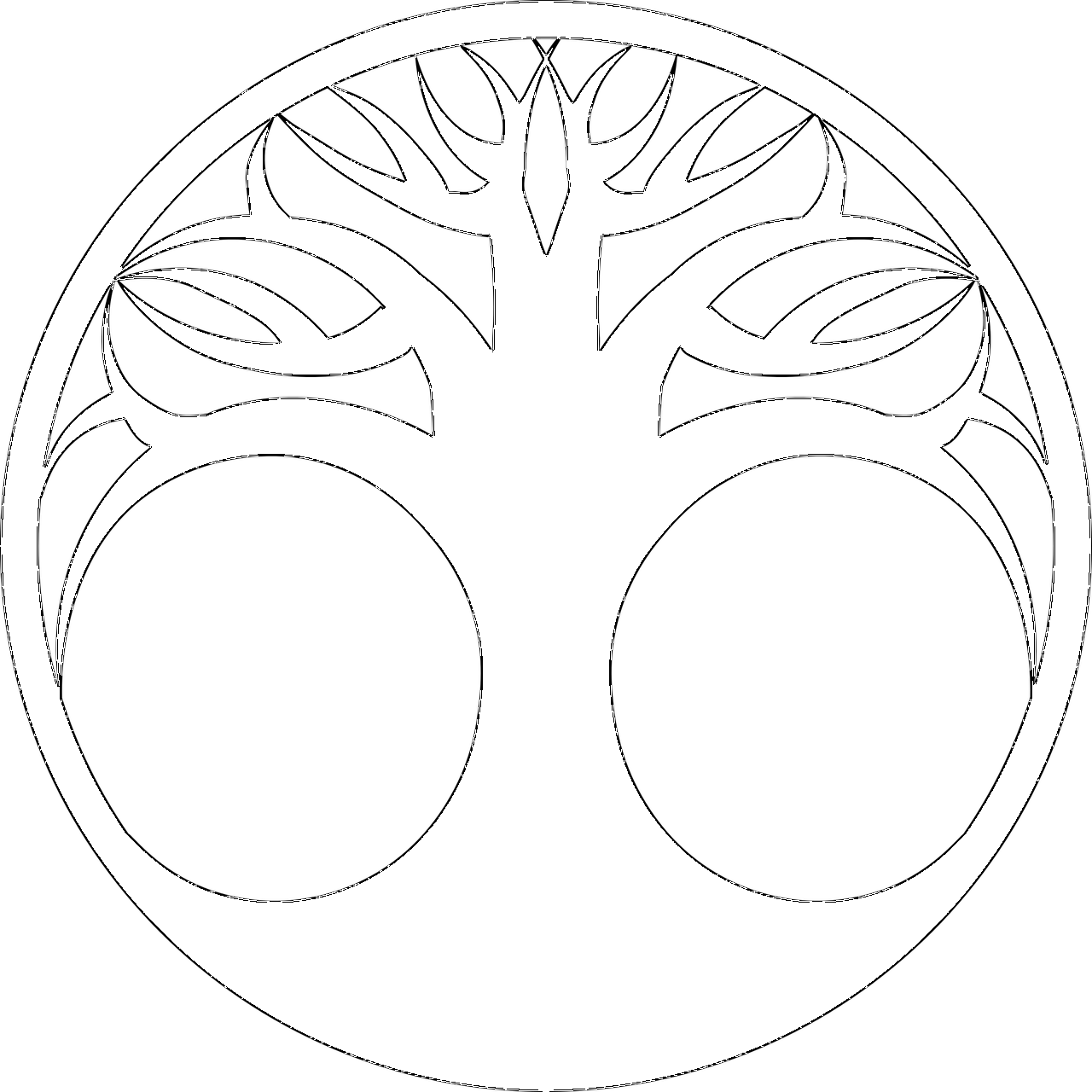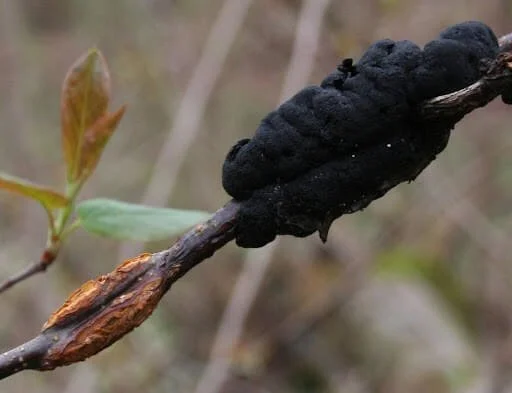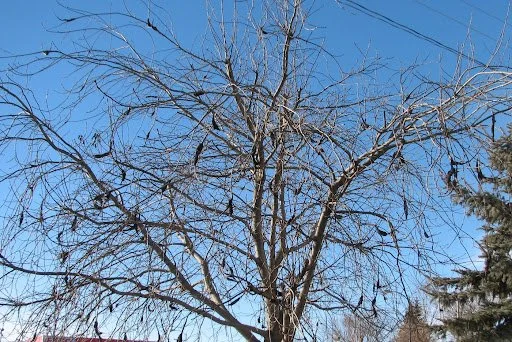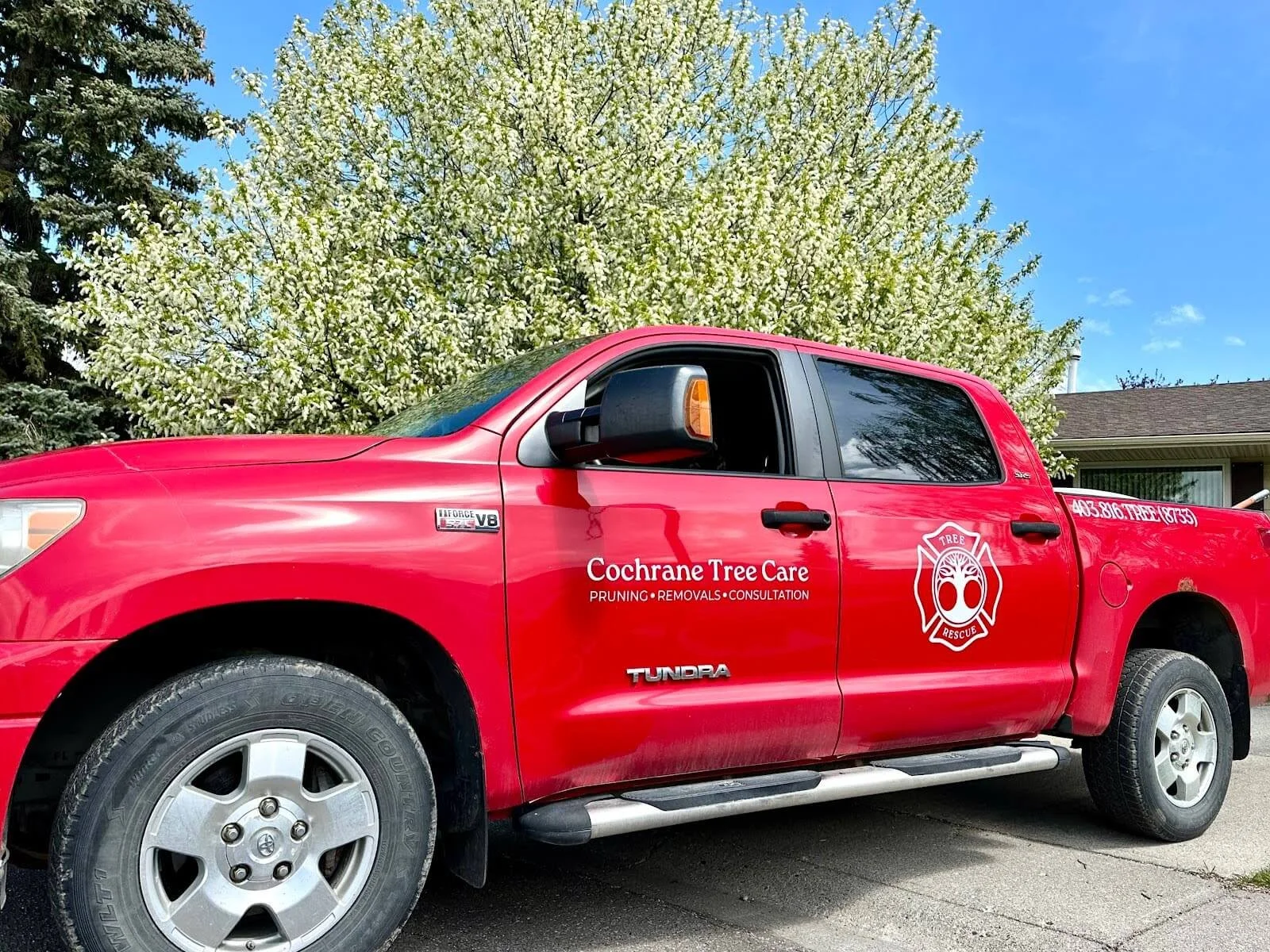What’s That Ugly Growth on My Mayday or Chokecherry?
Recognizing Black Knot Disease in Mayday and Schubert Chokecherry Trees in Cochrane
Have you noticed odd, black clumps growing along the branches of your Chokecherry or Mayday tree? Maybe they look like lumps of burnt wood or dried tar wrapped around a twig.
You’re likely looking at Black Knot — a fungal disease that’s extremely common in Cochrane and NW Calgary, especially on Mayday and Schubert chokecherry trees. While they may look different at first, both are part of the Prunus genus and are highly susceptible.
It’s not just an eyesore — if left unchecked, Black Knot can slowly disfigure and kill your tree over time. But if you catch it early, there’s still hope.
What is Black Knot ?
Black Knot is caused by the fungus Apiosporina morbosa. It infects cherry and plum species by entering through fresh, vulnerable tissue — usually after pruning wounds or during damp spring weather.
Over time, the fungus creates long, swollen black galls that grow around twigs and branches, cutting off the flow of nutrients and weakening the tree’s structure. In advanced cases, it can cause significant dieback or even kill the tree entirely.
How to Spot Black Knot in Mayday and Schubert Chokecherry
Here are the key signs to look for:
Black, tar-like swellings on branches
The most obvious symptom is the rough, black growth that looks like a hard lump of charcoal or a twisted mass of dried tar.
These galls can start small and green in spring, then turn black and expand throughout the growing season.
Common on Mayday and Schubert chokecherry
Mayday trees are known for their white spring flowers and fast growth.
Schubert chokecherries look similar but have green leaves that turn deep purple in early summer — they’re often planted for their ornamental foliage.
Both varieties are extremely vulnerable to Black Knot in Alberta’s climate.
Galls are mostly found on smaller branches
Early infections are typically found on young twigs and branch tips, but over time they can work their way into larger limbs.
Branch dieback
As the fungus cuts off nutrient flow, infected branches will die back beyond the gall, often during the peak of summer.
Why It’s Happening
Black Knot doesn’t infect healthy trees by chance — it takes advantage of trees that are already stressed, overgrown, or growing in poor conditions.
In most cases, the root cause is related to soil health and environmental stress, such as:
Compacted or nutrient-depleted soil
Poor pruning practices, especially in wet conditions
Low microbial activity, leading to weak natural immunity
Improper planting or poor drainage
Overcrowded trees, limiting airflow and encouraging fungus
Just like other pests and pathogens, Black Knot is a symptom, not the root cause. Fungi thrive when trees are missing key biological support in the soil — and research by experts like Dr. Thomas Dykstra confirms that healthier trees don’t emit the stress signals that attract fungal and insect activity.
Why Chemicals Won’t Help — and Might Make Things Worse
Black Knot is a structural disease, not just a surface issue. That means chemical sprays won’t penetrate where the fungus lives.
Fungicides are mostly ineffective once knots appear — and spraying nearby trees every season just masks the problem without addressing the underlying stress.
Synthetic fertilizers, especially high-nitrogen ones, can stimulate rapid, weak growth that’s more prone to infection. Worse, they disrupt the natural microbial life in the soil.
The real solution isn’t fighting the fungus directly — it’s building the soil back up, removing infected limbs properly, and helping the tree become more resilient.
What Can You Do Instead?
If you’re seeing Black Knot on your Mayday or Schubert chokecherry tree, here’s how Cochrane Tree Care can help:
Tree Health Consultations – We offer on-site visits to inspect your tree, identify early-stage infections, and develop a custom treatment plan.
Proper Pruning & Sanitation – We carefully prune out Black Knot galls below the infection, using appropriate tools (sooner the better!)
Organic Bioactive Treatments – Our regenerative sprays and deep root inoculants support the soil microbiome and restore tree vitality without relying on harsh chemicals.
A Regenerative Approach to Tree Health
At Cochrane Tree Care, we believe in treating the whole system — not just symptoms. That means working with nature to support your trees through healthy soil, improved structure, and balanced biology.
We don’t fight disease with chemicals — we build resilience from the ground up.
Take the Next Step!
If you’re worried about your tree health, we’re here to help.
👉 Book a Tree Health Consultation – Spend 30–60 minutes with Kurt reviewing your trees, yard, and treatment options.
👉 Explore Our Organic Tree Treatment Program – Four visits per year, starting at $399 for small properties, including foliar sprays and/or deep root injections.
👉 Request a Quote or Upload Photos – Quick form to help us understand your concerns.
About Kurt & Cochrane Tree Care
Kurt Stenberg is a regenerative arborist, permaculture practitioner, and certified arboriculture instructor with Arboriculture Canada. He also hosts the Arborist Blueprint Podcast, helping arborists across the world shift toward tree health-first practices.
At Cochrane Tree Care, we specialize in tree consultations, organic treatments, and sustainable solutions for long-term tree vitality.



